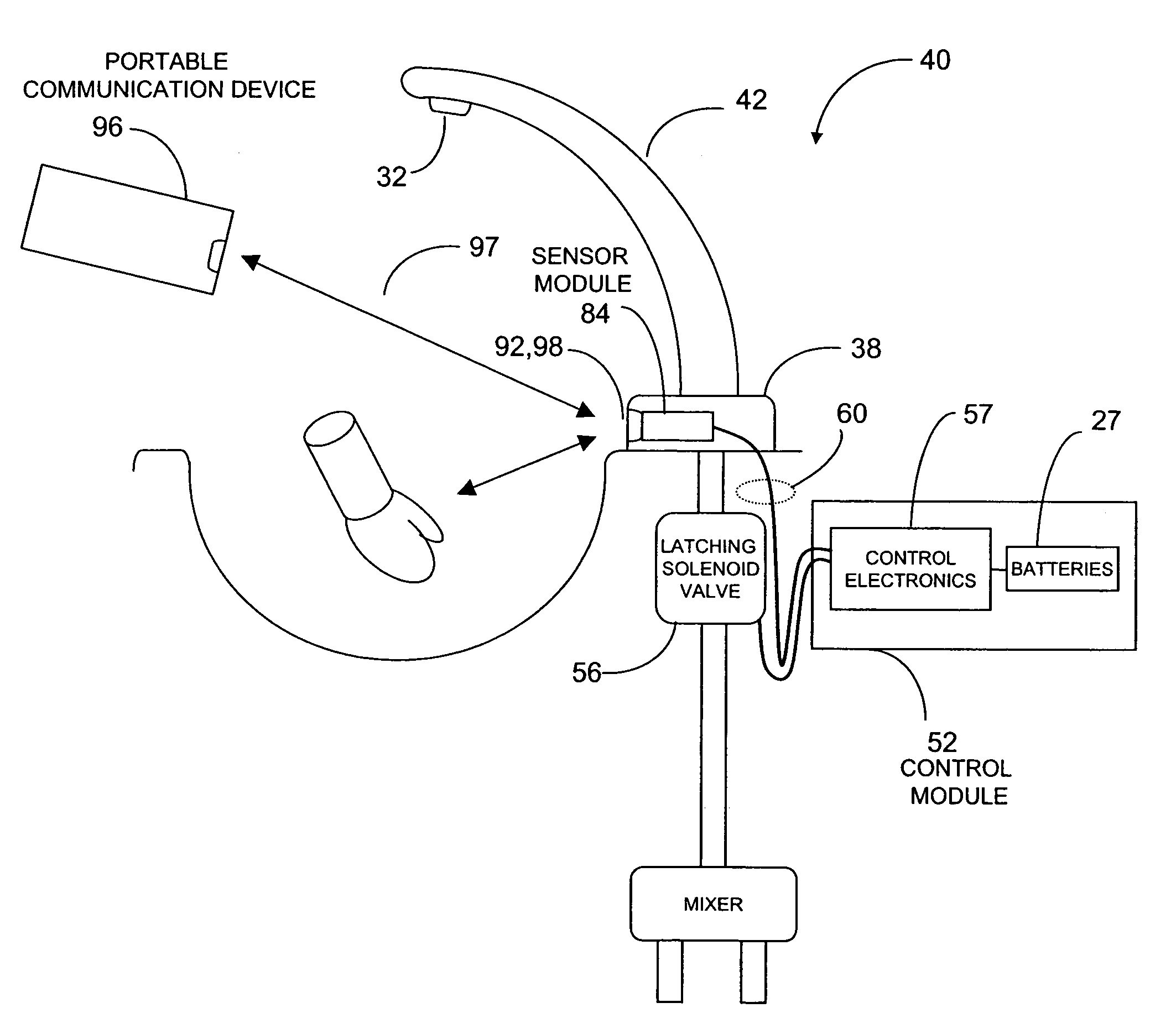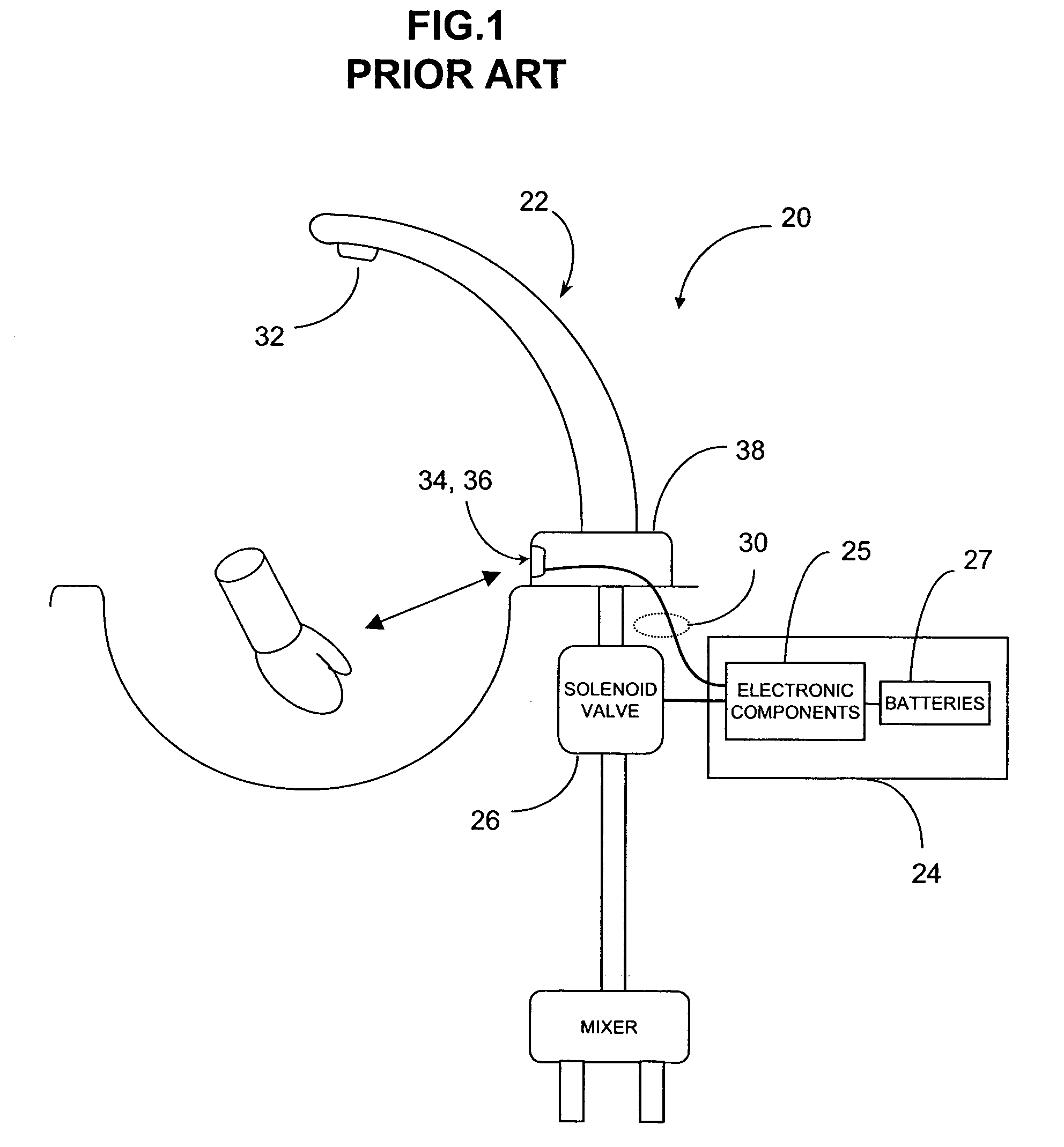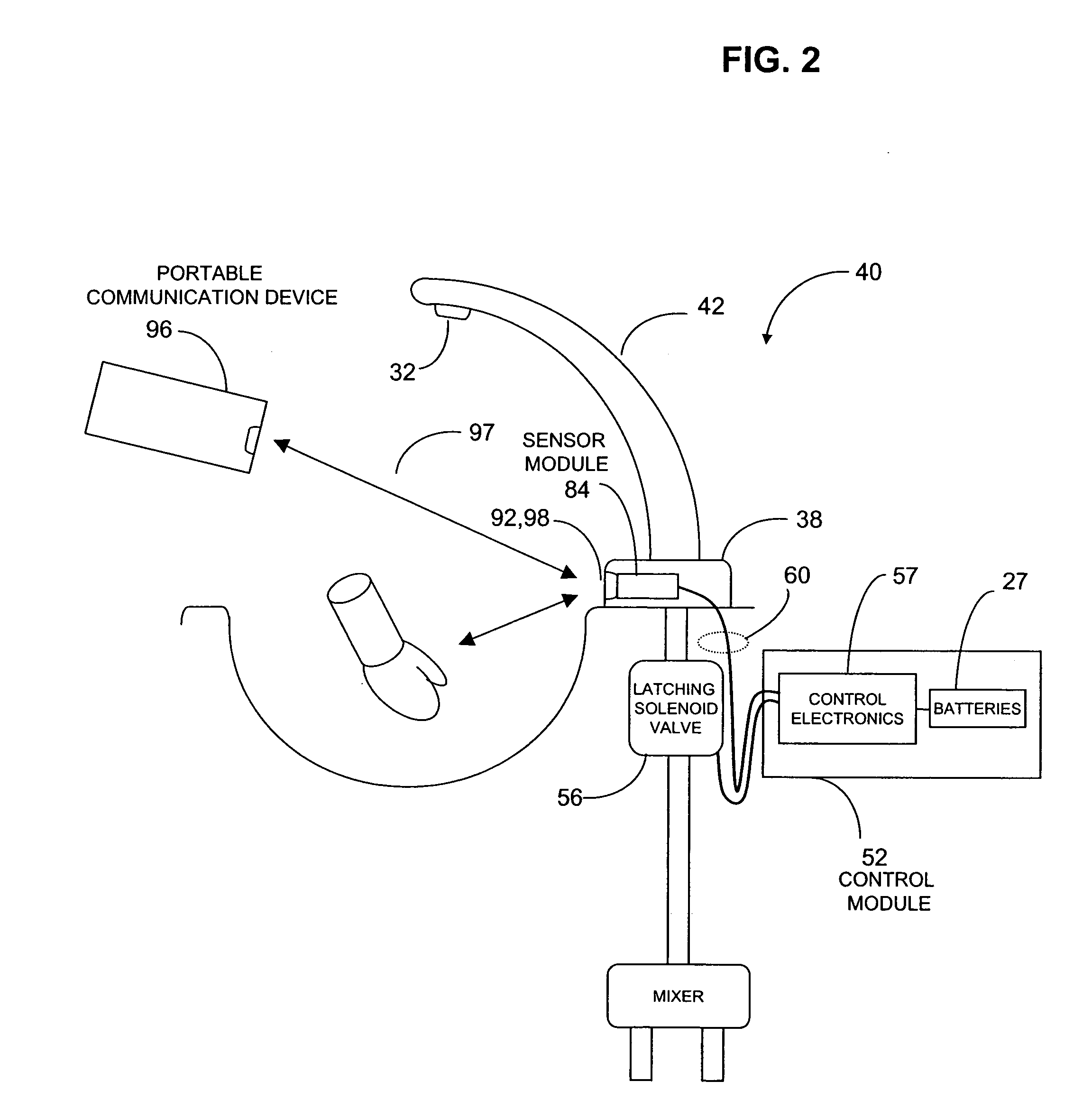Apparatus and method of wireless data transmission
a wireless data and apparatus technology, applied in the direction of process and machine control, optical radiation measurement, instruments, etc., can solve the problems of inability to adapt, gradual degradation of sensor lenses, gradual degradation of ir emitter performance, etc., to achieve faster information transfer, preventive maintenance, and reduce maintenance costs
- Summary
- Abstract
- Description
- Claims
- Application Information
AI Technical Summary
Benefits of technology
Problems solved by technology
Method used
Image
Examples
Embodiment Construction
[0031]Because the novel and patentable features of the present invention can be shown with block and other diagrams, conventional electronic elements well known to those skilled in the art, such as transistors, amplifiers, resistors, capacitors, programmable processors, logic arrays, memories and corresponding couplings and connections of such elements are not shown. A person skilled in the art could readily understand the block diagrams illustrating embodiments of the present invention. The block diagrams show specific details that are pertinent to the present invention and do not obscure the disclosure with details that would readily be apparent to those skilled in the art.
[0032]A conventional electronically operated flow control device 20 commonly found in the art is shown in FIG. 1. The prior art embodiment depicted in FIG. 1 generally includes a faucet 22, an electronics box 24 for housing electronic components 25 and batteries 27. The electronic components 25 are coupled to a ...
PUM
 Login to View More
Login to View More Abstract
Description
Claims
Application Information
 Login to View More
Login to View More - R&D
- Intellectual Property
- Life Sciences
- Materials
- Tech Scout
- Unparalleled Data Quality
- Higher Quality Content
- 60% Fewer Hallucinations
Browse by: Latest US Patents, China's latest patents, Technical Efficacy Thesaurus, Application Domain, Technology Topic, Popular Technical Reports.
© 2025 PatSnap. All rights reserved.Legal|Privacy policy|Modern Slavery Act Transparency Statement|Sitemap|About US| Contact US: help@patsnap.com



